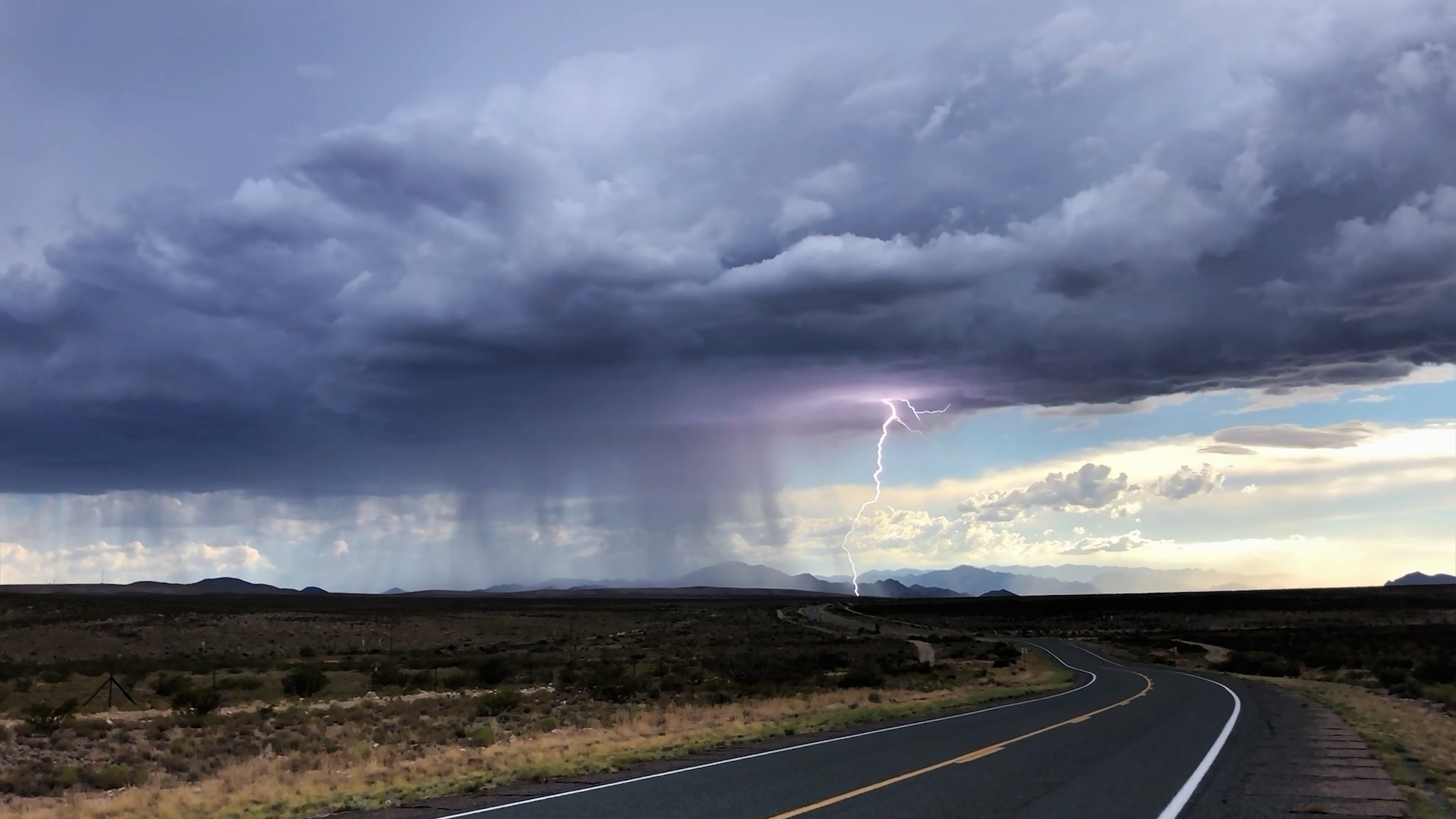
At Home in the In-Between
In 'All the Agents and Saints,' Stephanie Elizondo Griest doesn't just describe her country's in-between zones. She inhabits them.

A version of this story ran in the June 2017 issue.

There’s an almost throwaway bit of scene-setting late in All the Agents and Saints, just a few pages from the book’s end, that explains a lot about its writer. A friend of a friend is throwing a pool party, Stephanie Elizondo Griest is told, and she’s welcome to tag along.
“It will be interesting,” she’s promised.
“Everything is interesting to me,” Elizondo Griest tells herself, and her readers, passingly, so she forgets the curious remark until she finds herself chatting awkwardly around a hot grill with a drug-dealing Mohawk Indian.
Everything is interesting to me. In another context, from another writer, that might read as braggadocious, but it’s framed so offhandedly that it’s clear Elizondo Griest isn’t laying claim to any particular profundity. It’s just a described fact, and like so much of All the Agents and Saints, it has the ring of observed and considered truth. The result of that polymathic interest is an extraordinary book, and one that anyone with even a glancing interest in the United States’ borderlands should be eager to read.
Elizondo Griest is a native of Corpus Christi, and her peripatetic curiosity is well established in her previous books, including Around the Bloc: My Life in Moscow, Beijing, and Havana; 100 Places Every Woman Should Go; and Mexican Enough: My Life Between the Borderlines. (She’s also edited Best Women’s Travel Writing 2010 and has contributed, on occasion, to the Observer).
All the Agents and Saints is both an expansion and a deepening of the interests that have driven Elizondo Griest around the globe and, at the same time, ever closer to home. It continues to explore “the state of in-between-ness” that the Aztecs named nepantla in terms that touch, by turn, on geography, culture and autobiography. Its biracial author — a self-described hybrid “gringa/Chicana; cosmopolitan/ cowgirl; agnostic/Catholic; journalist/activist; Type A/free spirit” — continues to employ the project of understanding the “other” as a tool of self-discovery. What’s new is twofold: putting two borders in conversation, and the recent stability of the platform from which Elizondo Griest — now an assistant professor of creative nonfiction at the University of North Carolina at Chapel Hill — observes the world.
All the Agents and Saints is organized in two parts, one addressing the portion of the southern U.S. border delineated by the Rio Grande — the author’s biographical and ancestral homeland — and the other focused on the more obscure (to Texans) northern border with Canada. It’s 2007 when Elizondo Griest returns to South Texas, inspired by a need to report firsthand the border news that was then defining the region — skyrocketing drug war violence on the Mexican side — and a desire to “finally fuse” a long- bifurcated sense of self. “It seems time,” she writes, “to chart my own South Texas.”
What she finds there, in that frequently mythologized and more frequently demonized “liminal space,” is a land of miraculous cures that she can’t help but doubt and talking trees she refuses to dismiss. She meets Tejanos cornered by the economy into working for Mexican drug cartels or seeking employment with the U.S. Border Patrol. The denizens of Elizondo Griest’s South Texas — citizens and otherwise — are activists, artists, saints, bail bondswomen who moonlight as French restaurateurs, refinery workers and young men who sell weed from the back room of a taco shop. She considers Texas’ portion of the extant border wall in terms of aesthetic possibility and examines “the Dead Book” of deceased migrants in the Brooks County Sheriff’s Office. Finally, in what may be the book’s most vivid and viscerally moving chapter, she re-creates the final journey of a woman whom Elizondo Griest first sees as a decomposed body on a ranch near Falfurrias:
“At some point in the hike, calamity struck. If not an injury, a rape. If not a rape, a raid. Men in jalapeño green materialized out of the wilderness. The travelers saw their headlights and heard their Jeeps and the coyotes yelled and everyone scattered.”
Eventually the woman, either lost or left behind, was reduced to a corpse, one of some four a day that were discovered on remote Brooks County ranchlands in the summer of 2012, forcing the local mortuary to purchase a new cooler in which to store them all.
Observer readers may be familiar with much of Elizondo Griest’s subject matter in Part 1, “The Texas-Mexico Borderlands,” but they are likely to be significantly less well acquainted with the terrain of Part II, “The New York-Canada Borderlands.” The occasion for All the Agents and Saints’ second half is a yearlong visiting professorship at St. Lawrence University in New York state’s North Country, and its subject is the Mohawk Nation at Akwesasne.
Like the Tejanos of South Texas, the Mohawks have remained rooted — along the St. Lawrence River, in their case — even as a latter-day international border crossed them. Today, the land and its people are jigsawed by a confusing and frequently contested overlay of national, state, provincial and tribal jurisdictions. And as with Tejano South Texas, those divisions have imposed a cultural, political and personal state of in-between-ness on the Mohawks that manifests, for Elizondo Griest, as an unexpected sense of home.
Like the Tejanos of South Texas, the Mohawks have remained rooted—along the St. Lawrence River, in their case—even as a latter-day international border crossed them.
In Akwesasne she finds, again, a community of activists and artists responding to and resisting division. She finds, again, colonia-style poverty, leavened not by a booming Border Patrol infrastructure, but by legal tribal casinos and reservation cigarette shops. She finds, again, a movement to canonize an indigenous saint. She finds another river, also polluted, that’s become notorious as a conduit for the smuggling of drugs and people. And she befriends, among other people, an Akwesasne woman named Brenda, a sort of North Country doppelganger for the author, in whose reflection she sees the conflicted struggle to fuse a divided identity, an example of nepantla personified: “To always question, to always doubt, and to always, always ache.”
The parallels present Elizondo Griest with the uncanny opportunity to examine home as an outsider, and she takes that chance without an agenda or program, but with curiosity and humor, a well-honed feel for the rhythms and interruptions of life in a borderland, and not a few flashes of flat-out virtuosic prose.
But Elizondo Griest, belying her acknowledged privilege as an observer, doesn’t just describe her country’s in-between zones in All the Agents and Saints. She inhabits them. And so the book offers much more than just a very smart and companionable tour of the country’s ragged edges. It offers a model for how a curious person, any person who is sufficiently interested, can begin to navigate the boundaries that compartmentalize our country, and ourselves, toward wholeness.
This article appears in the June 2017 issue of the Texas Observer. Read more from the issue or become a member now to see our reporting before it’s published online.



